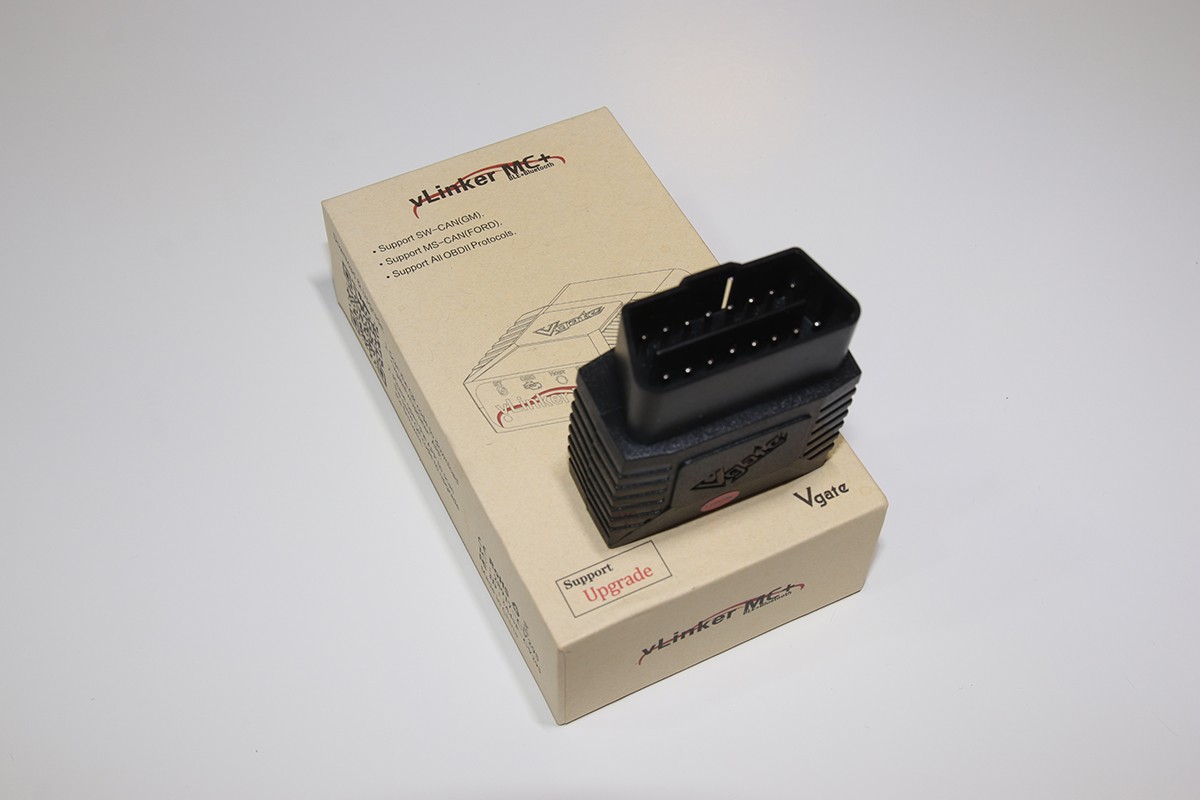Communicating effectively with your car’s Engine Control Unit (ECU) is crucial for identifying issues, maintaining optimal performance, and ensuring longevity. When that dreaded engine management light (EML) illuminates on your dashboard, the ECU holds the key to understanding why. Moreover, the ECU diligently logs problems even before they trigger the EML, and monitors vital aspects like service intervals and equipment functionality.
Decoding Your Car’s Health: Understanding OBD2 Scanners
So, how do you tap into this wealth of information stored within your car’s ECU? The answer lies in utilizing a diagnostic scanner, also known as a fault code reader. These devices connect to your vehicle through a standardized port, now universally recognized as the OBDII (On-Board Diagnostics II) port. OBD2 is the evolved second generation of on-board diagnostic systems. You’ll typically find this port located beneath the driver’s side dashboard, although it can sometimes be situated in the center console area.
The OBD2 standard became mandatory in the United States around 1996. Europe followed suit, mandating OBD2 for gasoline cars starting in 2001 and for diesel vehicles from 2004 onwards.
Bluetooth OBD2 Scanners: A Modern Approach to Diagnostics
The Bluetooth OBD2 scanners we’re evaluating in this guide consist of compact plug-in dongles that establish wireless communication with your smartphone, tablet, or laptop via Bluetooth. These scanners generally offer a more budget-friendly alternative to dedicated, standalone scanners equipped with their own screens.
Across the seven Bluetooth scanners we tested, the initial setup process was remarkably similar. It begins with downloading a compatible app to your mobile device or computer. Some scanners come with their own proprietary apps, while others offer compatibility with a range of third-party applications.
The next step involves physically connecting the Bluetooth device to your car’s OBD2 port. After switching on the ignition, you simply launch the app on your device. We found the Bluetooth pairing and connection process between the scanner and our test devices to be consistently quick and user-friendly.
With a background in car diagnostics spanning several years, we were particularly interested in assessing the real-world capabilities of these more affordable Bluetooth scanners. Continue reading to discover our findings and recommendations.
Best Bluetooth OBD2 Scanners: Top Picks at a Glance
vLinker MC+
Award: Best Overall & Best Value
Pros: Intuitive indicator lights for connection status and power, enhancing app pairing.
Cons: Extensive selection of third-party apps may require time to identify the ideal one for your needs.
RRP: From $59.99 / £59.95
vGate, a prominent Chinese electronics manufacturer, offers an extensive range of diagnostic scanners. The vLinker MC+ stands out for its user-friendliness, and our experience confirmed this claim. The scanner’s front panel features clearly labeled indicator lights that provide immediate feedback on connection status and power supply integrity. A dedicated connect button further simplifies the Bluetooth pairing process with your chosen app. The vLinker MC+ offers broad compatibility, working seamlessly with numerous third-party apps on smartphones (both Android and iOS), as well as Windows PCs and laptops.
The depth of diagnostic information available with the vLinker MC+ is impressive, contingent on the app you select. We utilized the “Car Scanner” app and successfully pinpointed a parking sensor malfunction on an Audi A3. The scanner facilitated a comprehensive system-wide vehicle health check and provided real-time data monitoring of engine parameters, fuel economy calculations, and even acceleration performance metrics.
For a more in-depth analysis, explore our comprehensive vLinker MC+ scanner review.
OBDeleven
Award: Editor’s Choice
Pros: Straightforward and efficient fault code scanning, emphasizing ease of use.
Cons: Optimized performance for VAG (Volkswagen Audi Group), BMW, and select other vehicle brands.
RRP: From $88.34 / £69.95
The OBDeleven, one of the most diminutive scanners in our Bluetooth OBD2 scanner comparison, presented some difficulty in removal from certain vehicles’ OBD2 ports due to its size. Fortunately, a keyring attachment is included to aid in removal, and a universal extension cable provides an alternative solution to this minor inconvenience.
This scanner employs a dedicated app specifically tailored for brands like VAG, BMW, and Rolls-Royce. During our testing across different vehicles, the app sometimes automatically identified the vehicle, while in other instances, manual VIN (Vehicle Identification Number) entry was required.
The free, entry-level app delivers a basic yet functional experience. It effectively scans for fault codes and, in some cases, conducts detailed scans of various vehicle systems, including audio, parking sensors, and airbag systems. Identified fault codes are presented alongside relevant descriptions and supplementary information for troubleshooting.
Beyond fault code identification (and live data display for compatible makes), the free app’s features are limited. Access to advanced functionalities like one-click apps for modifying vehicle settings or performing system tests necessitates upgrading to a Pro subscription (annual subscription starting from $53.29) or purchasing credits (from $2.19).
With a two-year warranty and a user-friendly free scanning app, the OBDeleven is a dependable and uncomplicated tool that performs its core function effectively.
Read Rob’s detailed assessment in the OBDeleven full review.
TopDon TopScan
Award: Approved
Pros: Exceptional dedicated software for accurate fault detection and diagnosis.
Cons: Incompatibility with 32-bit Android phones, requiring 64-bit architecture.
RRP: $69.99 / £59.49
TopDon, a long-established manufacturer of professional-grade car diagnostic equipment, offers the TopScan Bluetooth scanner, targeting the DIY automotive enthusiast. A dedicated app is required for smartphone operation, but we encountered a compatibility issue with 32-bit Android phones (64-bit required), a problem not observed with other scanners tested. For iPhones running iOS 10 or later, the “TopGuru” app is necessary, a detail clarified by TopDon’s responsive support centers in both the US and China.
Aside from the initial app compatibility hiccup, installation and communication with the TopDon scanner proved swift. A diagnostic trouble code (DTC) scan successfully identified a parking sensor issue, a fault detected by only two other scanners in our test group (OBDeleven and vLinker MC+). Automatic vehicle identification was unsuccessful during our testing, necessitating manual vehicle selection, starting with the manufacturer. We appreciated the inclusion of “Hot Functions,” such as oil service and battery reset. However, the absence of live data streaming, freeze-frame data, or a dashboard display limits real-time engine data monitoring. Furthermore, the app’s free access is limited to one year, with subsequent annual subscriptions ranging from $49 to $99.
For a more comprehensive evaluation, consult Rob’s TopDon scanner full review.
OBDLink CX
Pros: Free dedicated app and compatibility with third-party apps like BimmerCode for expanded functionality.
Cons: Extremely compact design can make unplugging from the OBDII port challenging.
RRP: From $79.99 / £78
The OBDLink CX represents the entry-level Bluetooth scanner offering from OBDLink, a US-based company. Its exceptionally small form factor allows for discreet storage within a glovebox or center console. However, its diminutive size made it somewhat difficult to grip and disconnect from the OBDII port. Fortunately, UK supplier Gendan provides a 20cm extension cable to alleviate this issue.
A concise user guide with a QR code simplifies the free app download process. Once installed, connecting your phone to the scanner involves starting the car, plugging in the device, launching the app, and waiting for connection. While connection required a couple of attempts, it was generally rapid. The app’s interface is straightforward and intuitive, featuring a simple menu structure.
Diagnostic responsiveness was quick, but the scanner failed to detect a pre-existing parking sensor fault on our test vehicle.
We found the dashboard display to be a valuable feature, providing real-time readings for engine RPM, speed, MAF (Mass Air Flow) pressure, battery voltage, and fuel level. This can be combined with freeze-frame data when a fault is registered. The app also offers trip logging, calculating fuel consumption and mileage, and the option to display live data as graphs.
While OBDLink offers more advanced scanners with expanded features, the CX version serves as a capable and affordable entry point into Bluetooth OBD2 diagnostics.
Explore the OBDLink CX full review for a deeper dive.
OBDLink MX+
Pros: Feature-rich free app with advanced diagnostic capabilities and enhanced vehicle system access.
Cons: Marginal performance improvements over the significantly more affordable CX model may not justify the price difference.
RRP: From $139.95 / £129.95
OBDLink’s flagship Bluetooth scanner, the MX+, delivers a robust feature set and comes bundled with a comprehensive free app. It is, however, the most expensive scanner in our test group. The app installation process on smartphones or Kindle Fire devices is quick and easy, as is the Bluetooth pairing procedure. Connecting to the car involves simply plugging the scanner into the OBDII port and launching the app. A button on the scanner assists with connection troubleshooting if needed. A brief user guide further simplifies setup and operation.
The dedicated OBDLink app boasts an intuitive interface with only seven main menu options.
The MX+ excels in diagnostic depth, particularly with its enhanced diagnostics capabilities, successfully identifying a parking sensor fault that had not yet triggered the EML.
Additional features abound, including versatile live data analysis options. The Dashboard function provides virtual instrument gauges, while the Graph function displays plotted data for trend analysis. The Map function enables journey data logging for parameter tracking and MPG calculations, and the Performance function calculates acceleration metrics.
The MX+ offers added diagnostic depth compared to the CX, but the significant price premium may only be warranted for users who require advanced diagnostic features. For basic diagnostics, the CX provides excellent value.
Read the complete OBDLink MX+ full review for a detailed comparison.
UniCarScan UCSI-2100
Pros: Extensive compatibility with both dedicated and generic free apps, offering user choice and flexibility.
Cons: Overwhelming app selection may present a challenge in choosing the most suitable option.
RRP: From $79.99 / £54
Manufactured by WGSoft in Germany, the UniCarScan UCSI-2100 is a compact Bluetooth OBD2 scanner compatible with a broad spectrum of apps across smartphones (iOS and Android) and Windows PCs or laptops. App options include dedicated apps for specific car brands like BMW and Opel, as well as generic apps, including WGSoft’s own ScanMaster app.
Once plugged into the OBDII port, connection to a phone or laptop is rapid. The level of diagnostic detail varies depending on the chosen app. ScanMaster, for example, features nine menu options, although some functionalities require in-app purchases. Trouble code retrieval is quick, but in our testing, it did not detect the parking sensor fault. Freeze-frame data is a valuable feature for capturing parameter values at the moment a fault occurs, and live data assists in in-depth engine analysis.
The UniCarScan UCSI-2100 provides a practical and affordable solution for emergency diagnostics and routine vehicle health checks between service intervals.
Explore Rob’s comprehensive UniCarScan scanner review for more information.
vLinker FD+
Pros: Broad compatibility with a wide array of third-party apps across Windows, Android, and iOS, expanding user options.
Cons: Extensive app ecosystem may require some experimentation to find the optimal app for individual needs.
RRP: From $49.99 / £42
The vLinker FD+, manufactured by vGate, offers global availability. This compact Bluetooth scanner incorporates indicator lights on its face to confirm connection status upon plugging in. Its small size can make removal from the OBD2 port slightly cumbersome.
Choosing a compatible third-party app can be somewhat complex due to the sheer number of options, including dedicated and generic apps. Pairing with smartphones or Windows laptops is straightforward and reliable. Depending on the chosen app, users can expect detailed fault information and interpretations, along with live data monitoring for comprehensive diagnostics.
The vLinker FD+ provides a solid entry point into the world of vehicle diagnostics and real-time data access.
Read the vLinker FD+ full review for a more detailed perspective.
Choosing the Right Bluetooth OBD2 Scanner: A Buyer’s Guide
Selecting the “best” Bluetooth OBD2 scanner ultimately depends on your specific needs and priorities. There’s no single universal solution. Begin by clarifying your primary purpose for using a scanner. If your goal is simply to diagnose the cause of an illuminated EML, any of the scanners tested will suffice. However, some scanners offer more in-depth diagnostics for specific vehicle brands, which can be advantageous if your vehicle is supported. For instance, if you own a BMW, consider scanners compatible with the BimmerCode app for enhanced functionality.
Crucially, verify compatibility with your vehicle before purchasing. Newer vehicles (manufactured from 2017 onwards) often utilize a CAN-Bus (Controller Area Network) system for ECU communication, a specific OBDII protocol supported by some, but not all, scanners. If your car is a newer model, confirm CAN-Bus compatibility with the scanner manufacturer or supplier before making a purchase. We found manufacturer support to be generally helpful in addressing compatibility inquiries.
All scanners tested are capable of resetting the EML by clearing fault codes. If you require additional reset functions, such as resetting oil service lights, consider scanners that offer these features. Some scanners include these functions as standard, while others may require a premium “Pro” package or subscription.
Similarly, evaluate the value of extra features like live data displays, MPG calculations, and dashboard interfaces. Determine whether these are genuinely useful tools for your needs or simply appealing but ultimately unnecessary extras.
Further Resources for Diagnostics:
Are you passionate about modified cars? Explore our schedule of performance car events throughout the year on our Fast Car Events page for upcoming events.


